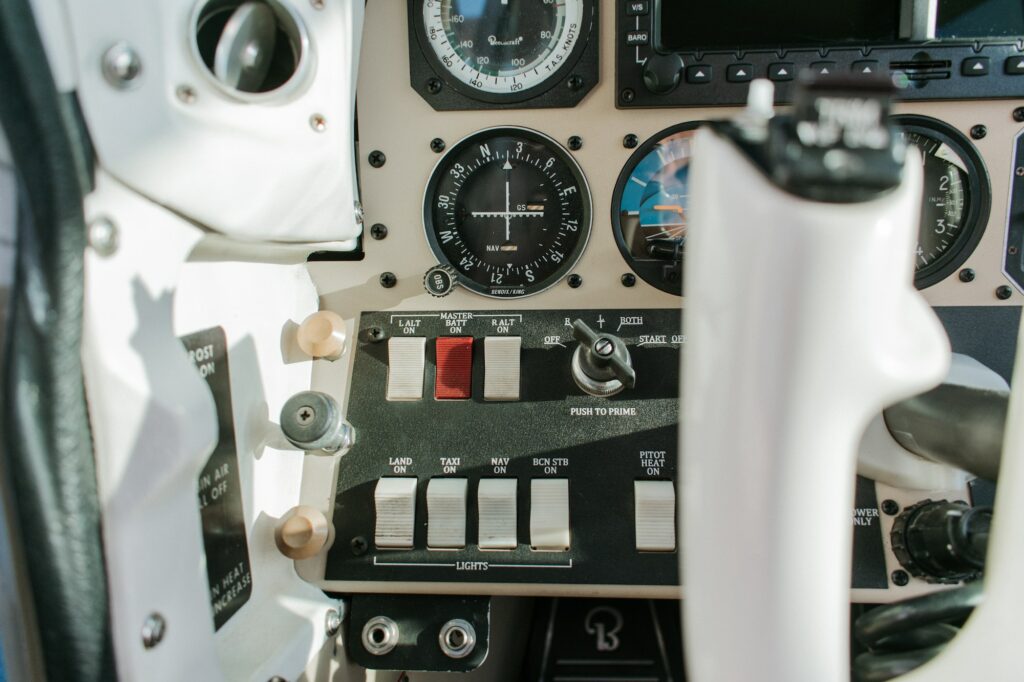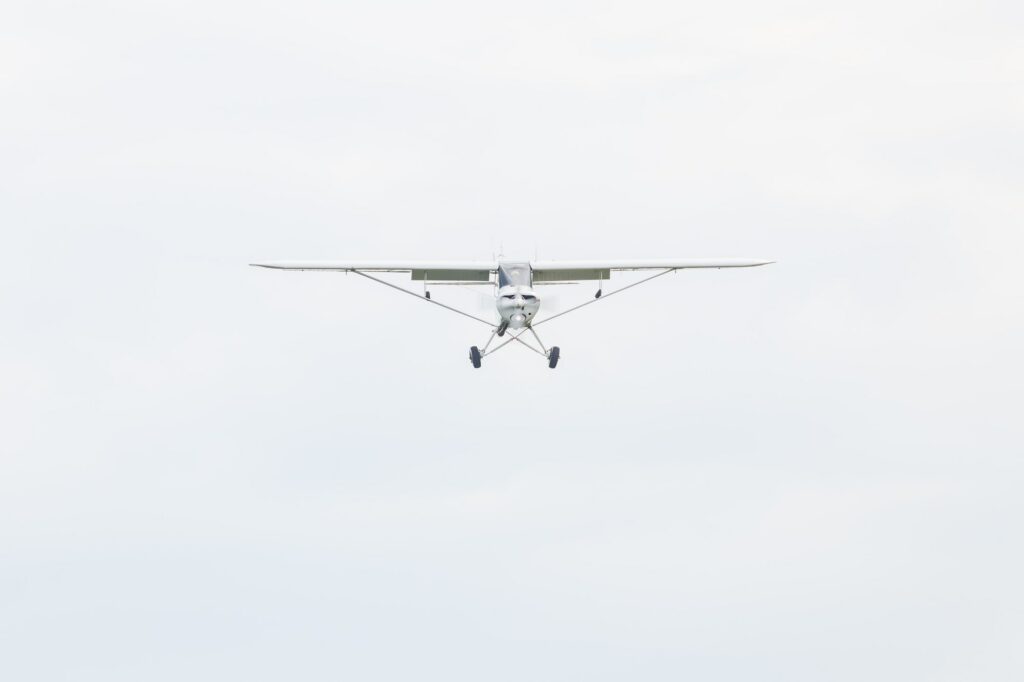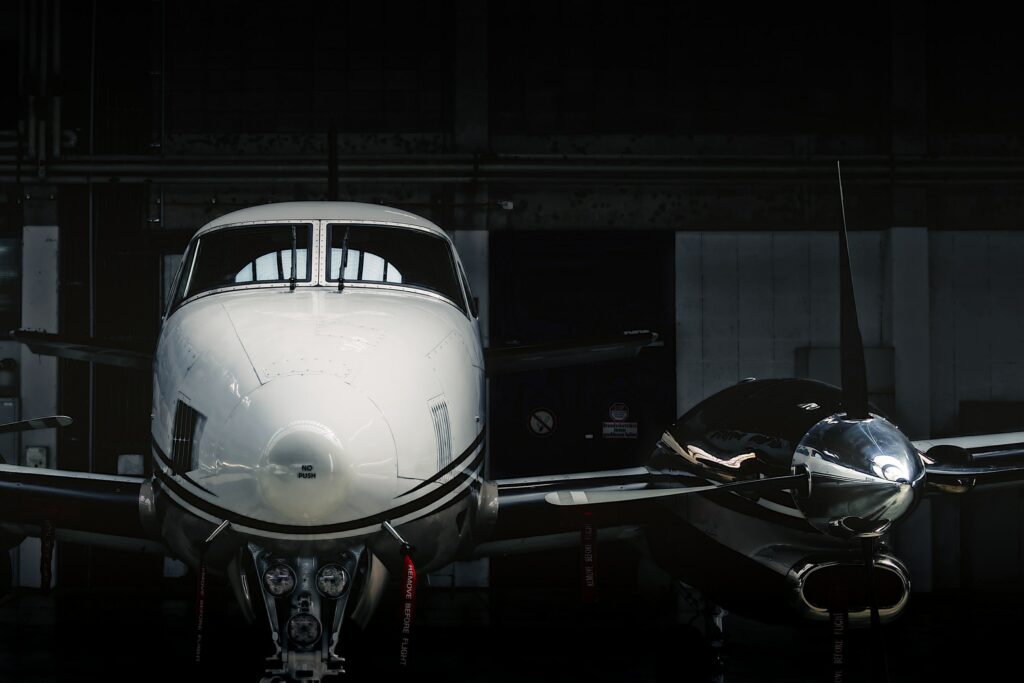
How to Study in Flight Training
How to Study in Flight Training
Going through the motions won’t get you far at flight school. Studying the right way saves you money, and makes you a better pilot.
It’s All About Application
This is particularly tough for pilots with little real-world experience in learning non-academic material.
Learning to fly is not like learning in school. It’s far, far more focused on application. High school or college education may include an application focus, but it’s often in a very limited sense. Flying takes applied learning to a different level. Students who are accustomed to coasting through the education system will find that it doesn’t work as well in flying. You either know something or you don’t, and you can either do something, or you can’t.
For some students, this is a non-issue. Farmers and ranchers tend to do well. So do athletes. Mechanics. And musicians. For these groups, the relationship between knowing, understanding, and applying is already learned. They also tend to be comfortable taking small actions without explicitly knowing all possible outcomes, trusting themselves to continue deciding and revising along the way. This is a critical skill in flying.
Sometimes even folks with very applied backgrounds, say mechanical engineers or software engineers, can struggle to apply their knowledge in the air because they are not accustomed to the severe time constraints placed on pilots. If we don’t know something critical in the air we are in a bit of a doozy. While much of our daily life as pilots requires methodical problem solving, some actions must be immediate: recovering from a stall; a last-minute go around; modifying control pressures to compensate for an engine failure in a multi-engine airplane.
Many people of all backgrounds and skillsets are capable of being pilots. But some will be more inclined towards success than others.
An aviation education is, out of necessity, very applied. For this reason, it’s important that we study accordingly. Not just so we pass our tests, but because our lives depend on it.
Fundamentals Aren’t Learned Through Osmosis
Just because you can read something in a book doesn’t mean it makes sense or that you’re ready to work with that material. You have to actually drill it.
Some pilots try to learn information by pouring over text books or watching ground school videos. This is a solid start, we’re an online ground school after all, we know that knowledge must be learned before it can be applied. But something we emphasize early to all of our students is that this learning must be an active process. For the vast majority of pilots, there is no “learning via osmosis”. We have to read the material or watch the video and then follow it up by reviewing our notes, rewatching/rereading the parts we don’t fully understand, asking ourselves critically if a concept makes sense, making and using flashcards, and then applying that concept in the real world. Good learning is active. Great learning is probably not nearly as efficient in the short-run as one would hope. It requires time interacting with the subject.
Now, there is a place for learning via osmosis, but it’s not in setting the foundation. It’s in polishing. When pilots talk about “continuous learning” this is what they mean. Whether it’s reading books about aviation (shoutout to Langewiesche’s “Stick and Rudder” classic), learning from the weather-beaten cadre of elders in the hangar, or sifting through a regs book to find an answer to a question about maintaining your airplane, you have nearly endless opportunity to continue learning as a pilot. But the fundamentals are not learned that way.
What do we mean by “fundamentals”? We mean the basics of the craft. The main steps in preflighting your airplane. Understanding chordlines and angle of attack, and what rudder inputs must be applied and when; knowing how to read a METAR and a TAF and the cloud separation and visibility requirements you’re subject to in a given airspace type; looking at a sectional chart and knowing what kind of airspace you’re in. All of these must be learned intentionally. Once they are learned, they can be applied, which results in more learning. But the learning must occur first. We can learn a lot about angle of attack from pure experimentation in flight, but it’ll be dangerous and expensive. It’s a lot more effective to learn the concept first, understand generally how it’s applied, and then go spend lots of time applying it. And while there’s no substitute for applying in the airplane, there’s a cheap option that can get us started and allow us far, far more reps.
Chair Flying is How We “Apply” When We Study
By chair flying you are forcing your brain to make the connections necessary to chunk information so that it doesn’t require so much of you.
When it comes to in-airplane type skills, chair flying is the way we learn intentionally. To put it simply, chair flying is the act of sitting down with a cockpit poster and physically going through the motions of a flight. Many pilot’s don’t know where to start. If that’s you, here’s a piece of advice: begin with the engine start.
Chair flying an engine start highlights the applied nature of learning to fly. It also is a pretty obvious first step for anyone looking to get in the air. Even if you’re flying gliders, someone’s engine will need to be started. The engine start also highlights the difference between flying an airplane and driving a modern car. New pilots often think that an engine start consists of nothing except turning a key or pressing “start”, and that’s not the case. The process is involved. It’s simple when you know what’s going on and you’ve done the motions enough times to understand it, but there’s steps that must be followed. Improper procedure can flood your engine, set it on fire, or cause it to wear too quickly.
You should understand your engine start procedure to the point that by your third lesson you can get in the airplane with your instructor and start the engine correctly without help. Most parts of flying an airplane are a little more complicated, and more safety critical, than starting the engine, but that’s why this is a great place to start. Take that same intense studying, that drive for correct, timely procedure, and apply it to everything else.
One added benefit of a thorough chair flying habit is that it saves you money, time, and frustration on flight training. If you don’t know what you’re doing after engine start you’ll sit there on the ground for a long time, burning up your cash while the instructor sits there and spoon-feeds you. The instructor won’t care too much because they’re used to it, it’s their job, and they are logging flight time. But you should care. Every extra dollar you spend doing something you should already know how to do is a dollar lost.
Go to the Source
Whether you’re a hobbyist or a career aviator, you will need to know how to go to the source documentation to find answers, whether it’s a regulation, technical information about your airplane, or a company policy or procedure.
Finding source documentation is important for several reasons.
From a practical standpoint, examiners are evaluating your knowledge in accordance with either the Airman Certification Standards (ACS) or Practical Test Standards (PTS), both documents published by the Federal Aviation Administration (FAA). They’re also evaluating your ability to apply your knowledge of source documentation in real-world scenarios. You should be familiar both with the evaluation standards, and with the source documentation that the FAA publishes which often provides detail and clarification about various topics of flight.
When knowing a piece of information is not immediately critical in flight, examiners are often quite okay with applicants finding the information by applying their knowledge of source documentation, particularly the FAR/AIM. But if you don’t know your way around it, that’s on you.
When it comes to your written exam, reading through source material (e.g. The Pilot’s Handbook of Aeronautical Knowledge or the Airplane Flying Handbook) can be quite helpful in helping you earn a high score on the written exam. While these sources are not the most “user-friendly” they will contain the same wording you’re likely to see on your real test.
Furthermore, from a real-world, post-training perspective, knowing where to find source documentation is important in ensuring you remain legal. While there is a time and place for asking more experienced pilots about the legality of a process (e.g. ADS-B requirements), when it comes down to it it’s probably your ass on the line. Knowing how to use source documentation ensures that you protect yourself from violations.
Directing students to source material is a critical part of our mindset in each of our programs. We want students to be independent thinkers that can find their own information and apply it in the real world, and to do that well they need to be familiar with source material!
Ask Questions
Instructors know all too well the blank stares after we ask “any questions?” There are no dumb questions.
Frankly, sometimes the questions that sound the dumbest are the most important to ask because it highlights a fundamental misunderstanding of a concept. We always encourage students to ask us as many questions as they want, and we’ve been pleasantly surprised over the years to see just how many novel questions students come up with!
Questions that start with “why” are particularly useful because they are often not found in source documentation, but can provide needed context about our action, our intent, and can mentally shift us as necessary to perceive a subject in the right light.
Ask questions!
Don’t Beat Yourself Up
You are gonna make mistakes. It’s going to be embarrassing. Learn from it!
When you start learning to fly, you are probably going to suck. That’s okay. The flight training process is a cycle of learning from mistakes, making new mistakes, learning from those, and slowly building to a point where the mistakes we make are small, quickly identified, and corrected before they ever become a significant risk.
The mistakes never go away. Great pilots strive for perfection in each flight, but it’s a goal that will never be accomplished. Flying is a constant cycle of making mistakes, we just hope that most of them are so small that hardly anyone notices—besides ourselves.
So, don’t beat yourself up when you make mistakes. Why would you expect to be a great pilot from Day 1? Or even Day 20? It takes years to properly build this skillset.
When pilots (new, or otherwise) beat themselves up over mistakes, they set themselves up for future mistakes which may be even more severe. Fixating on errors reduces situational awareness, which is likely to produce more errors. The earlier you can learn to identify a mistake and move on, the better.
This is true whether the mistake was small or massive. One aspect of learning to fly that sometimes stuns students is the realization that something they did could have resulted in injury or death. The consequences of errors are high in the flying world. Nevertheless, we cannot fixate on our mistakes, we must learn and move on.
Occasionally instructors are blessed with students who make very few significant mistakes. Guess what we do in response? We up the ante until they make a mistake. We overwhelm them. The reason is that we need to know how that pilot will recover from a mistake. That pilot needs to know too. Will they recognize it, fix it, and then learn from it later? Can they debrief it later on the ground? Or will they lock up, fixate, get angry, shutdown, and let the rest of the flight fall apart? Reactions to mistakes are almost as important as the mistakes themselves. Frame your mindset, from the get go, to embrace your mistakes while also striving to never repeat the same one twice.
Don’t Make Excuses
This won’t work at any point in your flying journey, and you probably already know this. But when you make a mistake, or if you didn’t study enough, don’t make excuses. Don’t rationalize why you don’t know the answer. Just get better.
Instructors and examiners know how critical it is for a pilot to independently note and improve their shortcomings. We need to be able to accurately debrief ourselves. And this can be a challenge, because it’s often a hit to the ego.
Sometimes pilots choose to rationalize away their mistakes, instead of taking ownership for them. This is profoundly anti-safety. It’s a terrible way to approach your flying, and it will almost certainly come back to bite you, either from a safety standpoint airborne in the real-world, during a job interview, or on a checkride.
Own your mistakes, don’t make excuses.
Learn Continuously
Lastly, keep learning as you go. When you start, your knowledge will be very, very limited. When you get your license it’ll be a bit higher. A dedication to continuing to learn as a long-term process is critical to being safe as a pilot.
One of the best parts of a flying career is the opportunity to learn and refine forever. This doesn’t necessarily mean pursuing additional certificates or ratings, although we certainly recommend it if that interests you. But certainly you should continue to refine your flying process. Learn to make smaller mistakes. To fly more precisely. To have higher situational awareness. To compound your knowledge by, say, learning more about Air Traffic Control procedures, or by pursuing an instrument rating, or by reading books from pilots wiser than any of us.
There’s a limitless amount of learning that we can pursue as pilots, and it’s fun each step of the way!
In Conclusions
Learning to fly is a little different than other learning you may have experienced in the past. It’s very applied. It can be stressful. It requires us to differentiate between reading something in a book, understanding it, and being able to go apply it in the airplane with a time limit—and if we’re in the air, we have a time limit.
These reasons can make learning to fly a real thrill, if we embrace them. If we fight them, if we study poorly, if we beat ourselves up over mistakes, if we only listen to our instructor and don’t take ownership of our own learning… we will have less fun, and we’ll be worse off at the end. In flying, learning well and flying well go hand in hand.






